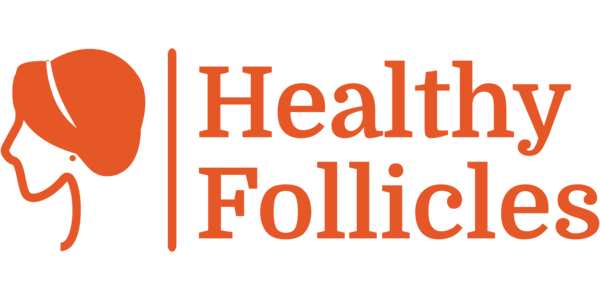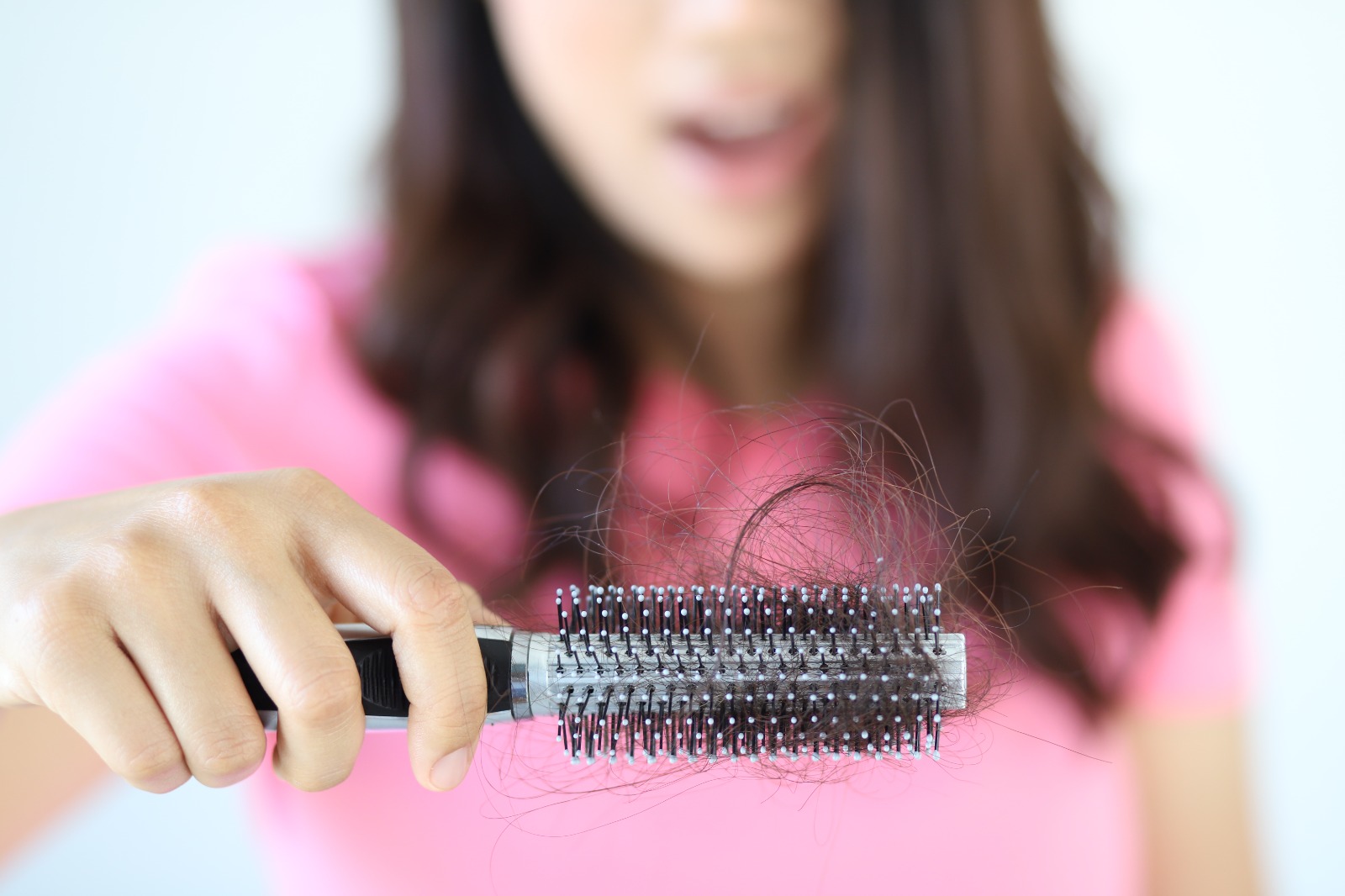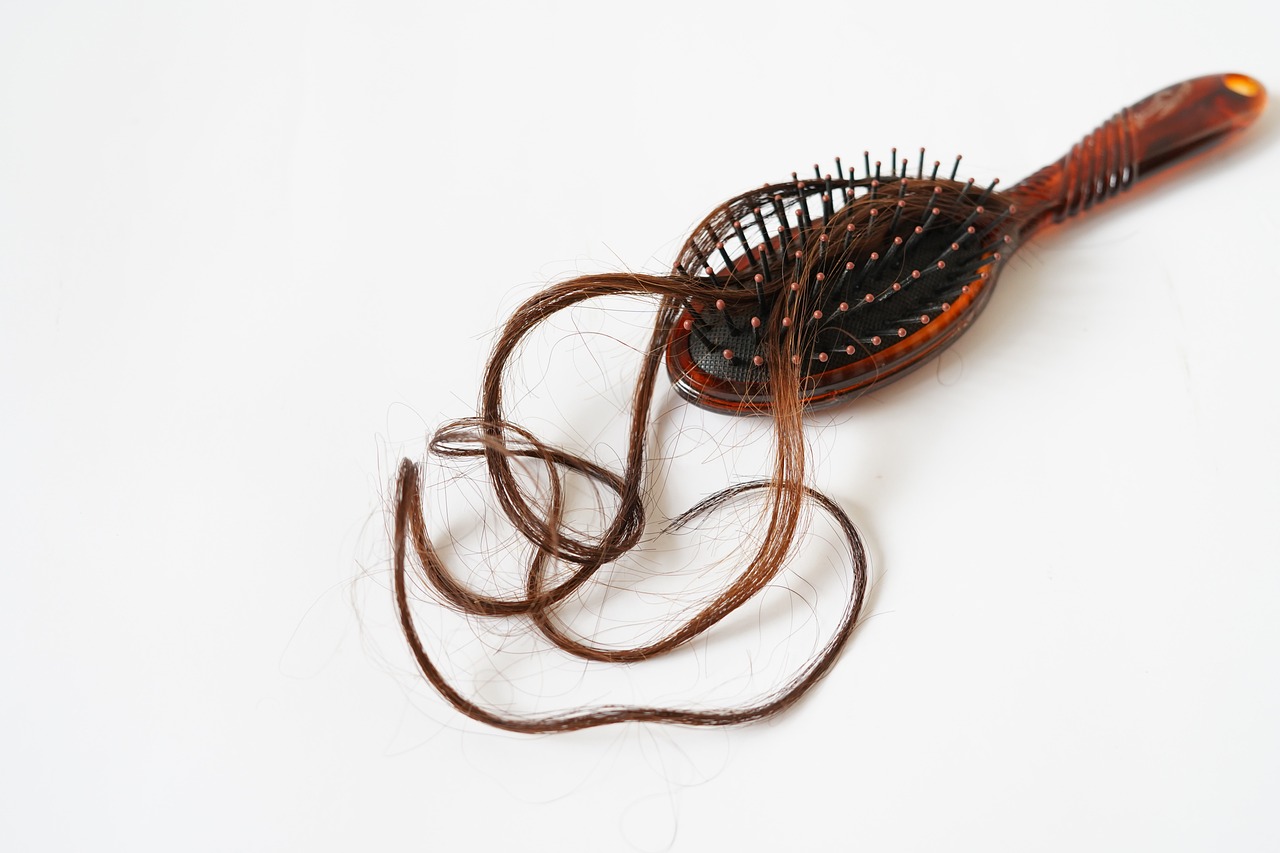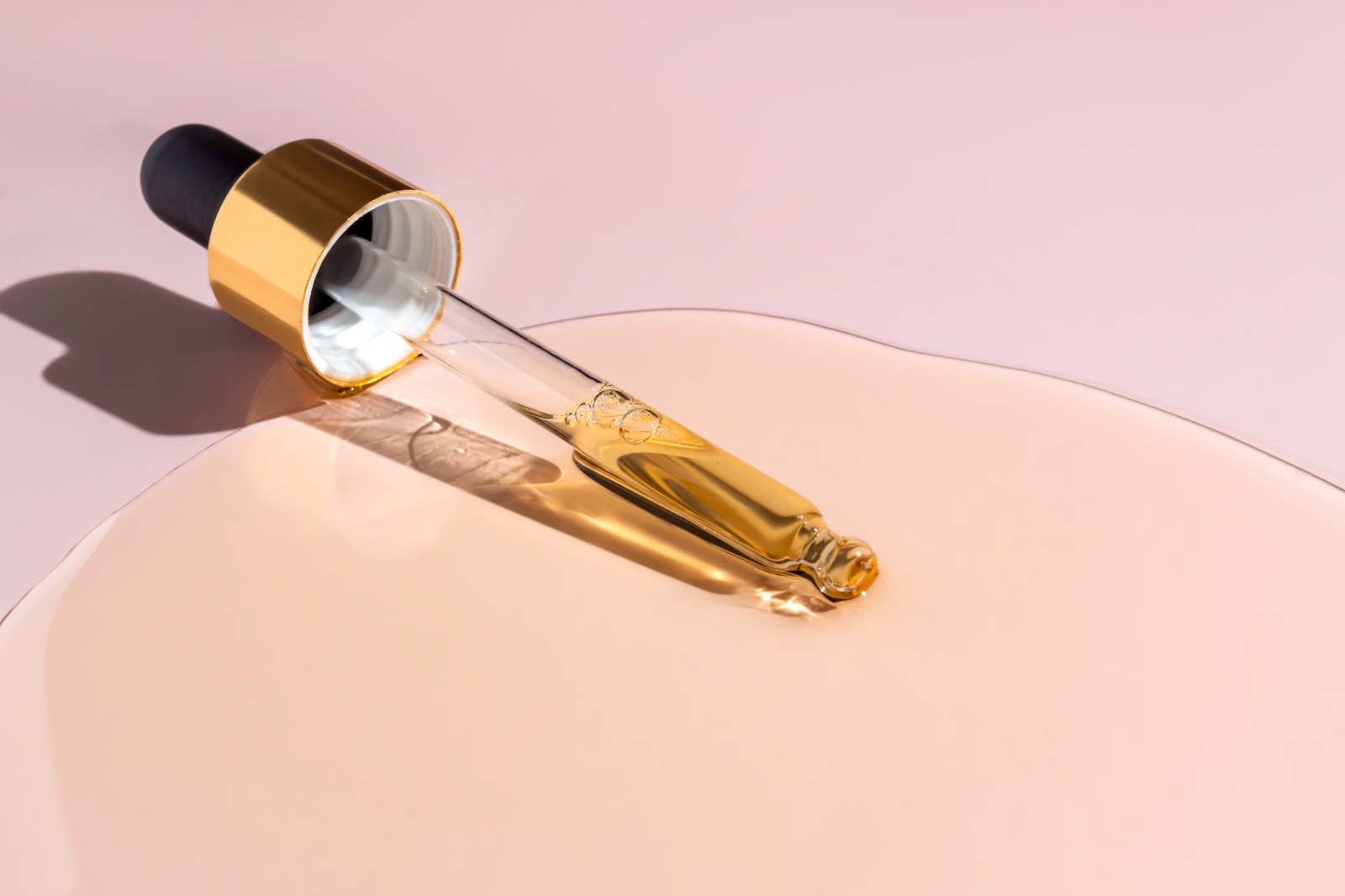Hair Care
Understanding Hair Damage: Types, Causes, and How to Repair
Are you guilty of over-styling and damaging your hair? We’re sharing all the reasons why your hair is damaged and what you can do to fix it. #hairproblems #hairdamagecontrol #hairrepair
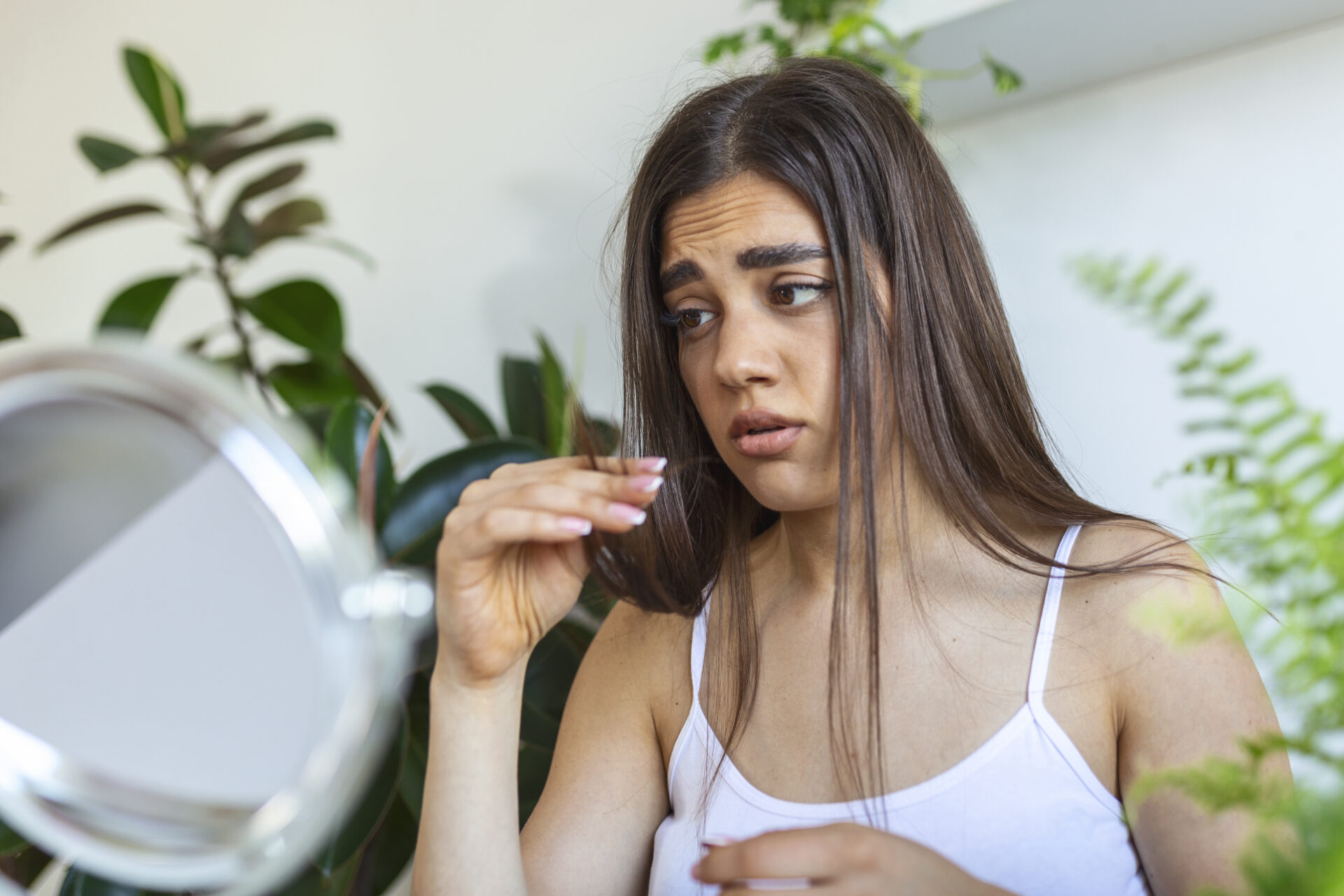
Introduction
Explanation of the importance of hair health
Your hair is a crucial part of your appearance and style. Healthy hair not only looks great but also boosts your confidence and overall well-being. Hair health is also an important indicator of your overall health. If your hair is dull, brittle, and prone to breakage, it may be a sign of an underlying health issue or poor hair care habits.
Overview of the impact of hair damage on hair health
Unfortunately, hair damage is a common problem that affects people of all ages and hair types. Damage can occur due to a range of factors, from heat styling and chemical treatments to environmental factors like pollution and weather conditions. When hair is damaged, it becomes weaker, more prone to breakage, and harder to style. Left untreated, damage can lead to thinning hair, split ends, and even hair loss.
Brief summary of what the article will cover
In this article, we will explore the different types of hair damage, the causes of hair damage, and how to repair damaged hair. By the end of this article, you will have a better understanding of how to prevent hair damage and keep your locks healthy, shiny, and strong.
Types of Hair Damage
There are four main types of hair damage, each with its own set of causes and symptoms. Understanding the different types of hair damage can help you identify the root cause of your hair problems and take appropriate steps to repair and prevent further damage.
Chemical Damage
Definition
Chemical damage occurs when hair is exposed to harsh chemicals, such as those found in hair dyes, bleach, and relaxers. These chemicals can weaken the hair shaft and make it more prone to breakage.
Causes
Chemical damage can be caused by using hair products that contain harsh chemicals, over-processing the hair with chemical treatments, or failing to follow proper hair care routines after chemical treatments.
Signs and Symptoms
Signs of chemical damage may include dry, brittle hair that is difficult to manage, split ends, hair breakage, and hair loss.
Thermal Damage
Definition
Thermal damage occurs when hair is exposed to high temperatures from heat-styling tools, such as blow dryers, flat irons, and curling irons.
Causes
Thermal damage can be caused by using heat styling tools too frequently, using them at high temperatures, or failing to use heat protectant products.
Signs and Symptoms
Signs of thermal damage may include dry, frizzy hair, split ends, and hair breakage.
Mechanical Damage
Definition
Mechanical damage occurs when hair is physically stressed or manipulated in a way that causes damage to the hair shaft.
Causes
Mechanical damage can be caused by activities such as brushing and combing hair too vigorously, wearing tight hairstyles, and using hair accessories that pull on the hair.
Signs and Symptoms
Signs of mechanical damage may include split ends, hair breakage, and a rough, uneven texture.
Environmental Damage
Definition
Environmental damage occurs when hair is exposed to environmental factors such as pollution, sun exposure, and harsh weather conditions.
Causes
Environmental damage can be caused by exposure to air pollution, the sun’s UV rays, saltwater, and chlorine.
Signs and Symptoms
Signs of environmental damage may include dry, brittle hair that is difficult to manage, hair breakage, and hair discoloration.
Comparison of different types of hair damage
While each type of hair damage has its own set of causes and symptoms, there are some commonalities among them. For example, all types of hair damage can lead to dry, brittle hair that is prone to breakage. Understanding the differences between the types of hair damage can help you identify the underlying cause of your hair problems and take the appropriate steps to repair and prevent further damage.
Causes of Hair Damage
While there are different types of hair damage, the causes of hair damage can be grouped into several categories. By understanding the common causes of hair damage, you can take steps to protect your hair and prevent further damage.
Heat Styling
Explanation of how heat styling can cause hair damage
Heat styling tools, such as blow dryers, flat irons, and curling irons, can damage hair by exposing it to high temperatures. The heat can cause the hair cuticle to lift and weaken, leading to dry, brittle hair that is prone to breakage.
Tips for minimizing the effects of heat styling
To minimize the effects of heat styling on your hair, you can:
- Use heat-protectant products before using heat-styling tools.
- Limit your use of heat styling tools and opt for air-drying your hair whenever possible.
- Use heat styling tools on the lowest temperature setting that still achieves the desired style.
Chemical Treatments
Explanation of how chemical treatments can cause hair damage
Chemical treatments, such as hair dyes, bleach, and relaxers, can damage hair by breaking down the hair’s natural proteins and weakening the hair shaft.
Tips for minimizing the effects of chemical treatments
To minimize the effects of chemical treatments on your hair, you can:
- Avoid overlapping chemical treatments, which can cause over-processing and damage to the hair.
- Follow the instructions on the product label carefully and use the recommended processing time.
- Use hair products designed specifically for chemically-treated hair to help repair and protect the hair.
Over-Washing and Harsh Hair Products
Explanation of how over-washing and harsh hair products can cause hair damage
Overwashing your hair or using harsh hair products can strip your hair of its natural oils, leaving it dry and brittle.
Tips for minimizing the effects of over-washing and using harsh hair products
To minimize the effects of over-washing and using harsh hair products, you can:
- Wash your hair less frequently, aiming for every 2-3 days instead of every day.
- Use gentle, sulfate-free shampoos and conditioners that are designed for your hair type.
- Avoid using hot water when washing your hair, as it can also strip your hair of its natural oils.
Environmental Factors
Explanation of how environmental factors can cause hair damage
Environmental factors, such as pollution, UV rays, salt water, and harsh weather conditions, can damage hair by causing dryness, discoloration, and weakening of the hair shaft.
Tips for minimizing the effects of environmental factors
To minimize the effects of environmental factors on your hair, you can:
- Protect your hair from the sun’s UV rays by wearing a hat or using a hair product with UV protection.
- Rinse your hair with fresh water after swimming in saltwater or chlorinated water.
- Use hair products that contain antioxidants, which can help protect your hair from environmental damage.
How to Repair Damaged Hair
Fortunately, many types of hair damage can be repaired with the right care and treatment. Here are some tips for repairing damaged hair:
Trimming the Ends of the Hair
One of the most effective ways to repair damaged hair is to trim the ends. Split ends and frayed hair tips cannot be repaired, so trimming them off can help prevent further damage to the hair.
Using Nourishing Hair Care Products
Conditioners
Using a high-quality conditioner can help repair damaged hair by adding moisture and nutrients to the hair. Look for conditioners that contain ingredients such as keratin, biotin, and essential oils that can help strengthen and repair hair.
Hair Masks
Hair masks are deep conditioning treatments that can help repair and restore damaged hair. Look for hair masks that contain ingredients such as argan oil, shea butter, and vitamin E that can help nourish and strengthen the hair.
Reducing Heat Styling and Chemical Treatments
Reducing your use of heat styling tools and chemical treatments can help prevent further damage to your hair. Opt for air-drying your hair whenever possible, and limit your use of heat styling tools to reduce the amount of heat damage to your hair. Similarly, reducing the frequency of chemical treatments, such as hair dye and relaxers, can help protect and repair your hair.
Incorporating Hair-Healthy Foods into Your Diet
Your diet can also play a role in repairing damaged hair. Incorporating hair-healthy foods into your diet, such as those rich in vitamins and minerals like biotin, vitamin C, and iron, can help support healthy hair growth and repair. Some examples of hair-healthy foods include eggs, nuts, spinach, and salmon.
Other Tips for Repairing Damaged Hair
Here are some additional tips for repairing damaged hair:
- Be gentle with your hair. Avoid brushing or combing your hair when it is wet, as wet hair is more prone to damage and breakage.
- Use a wide-toothed comb instead of a brush to detangle your hair.
- Avoid tight hairstyles, such as ponytails and braids, which can put stress on the hair and lead to breakage.
- Get enough sleep and manage stress, as both can impact hair health.
By following these tips, you can help repair and restore your damaged hair, and promote healthy, shiny hair.
Conclusion
In conclusion, hair damage can be caused by a variety of factors, including heat styling, chemical treatments, overwashing, and environmental factors. Understanding the types and causes of hair damage can help you take steps to prevent and repair it. By trimming damaged ends, using nourishing hair care products, reducing heat styling and chemical treatments, incorporating hair-healthy foods into your diet, and following other tips for repairing damaged hair, you can help restore your hair’s health and promote healthy, shiny hair.
Final thoughts
Remember that repairing damaged hair takes time and patience, and results may not be immediate. By consistently caring for your hair and following the tips outlined in this article, you can promote healthy, beautiful hair in the long term.
If you’re struggling with hair damage, we encourage you to take action today by incorporating some of the tips outlined in this article into your hair care routine. With a little effort and care, you can help repair your damaged hair and promote healthy, beautiful hair.
References
Here are some sources that were used in this article:
- American Academy of Dermatology. Hair care products can deliver the goods for damaged hair. Retrieved from https://www.aad.org/public/everyday-care/hair-scalp-care/hair/damaged-hair-products
- Hair Breakage: Causes and Treatment. Retrieved from https://www.healthline.com/health/hair-breakage
- International Journal of Trichology. Hair Cosmetics: An Overview. Retrieved from https://www.ncbi.nlm.nih.gov/pmc/articles/PMC4387693/
- Medical News Today. Can you repair damaged hair? Retrieved from https://www.medicalnewstoday.com/articles/323547
- Understanding Hair Loss — the Basics. Retrieved from https://www.webmd.com/skin-problems-and-treatments/guide/understanding-hair-loss-basics#1
These sources were consulted to provide accurate and up-to-date information on the topic of hair damage and repair.
Hair Care
Traction Alopecia Treatments
Say goodbye to hair loss caused by traction alopecia! Check out our latest guide to learn how to regrow hair, treatment options, and how long it takes for hair to grow back. #tractionalopecia #hairloss #hairgrowth #haircare #healthyhair #hairtreatment #hairregrowth #beauty #selfc
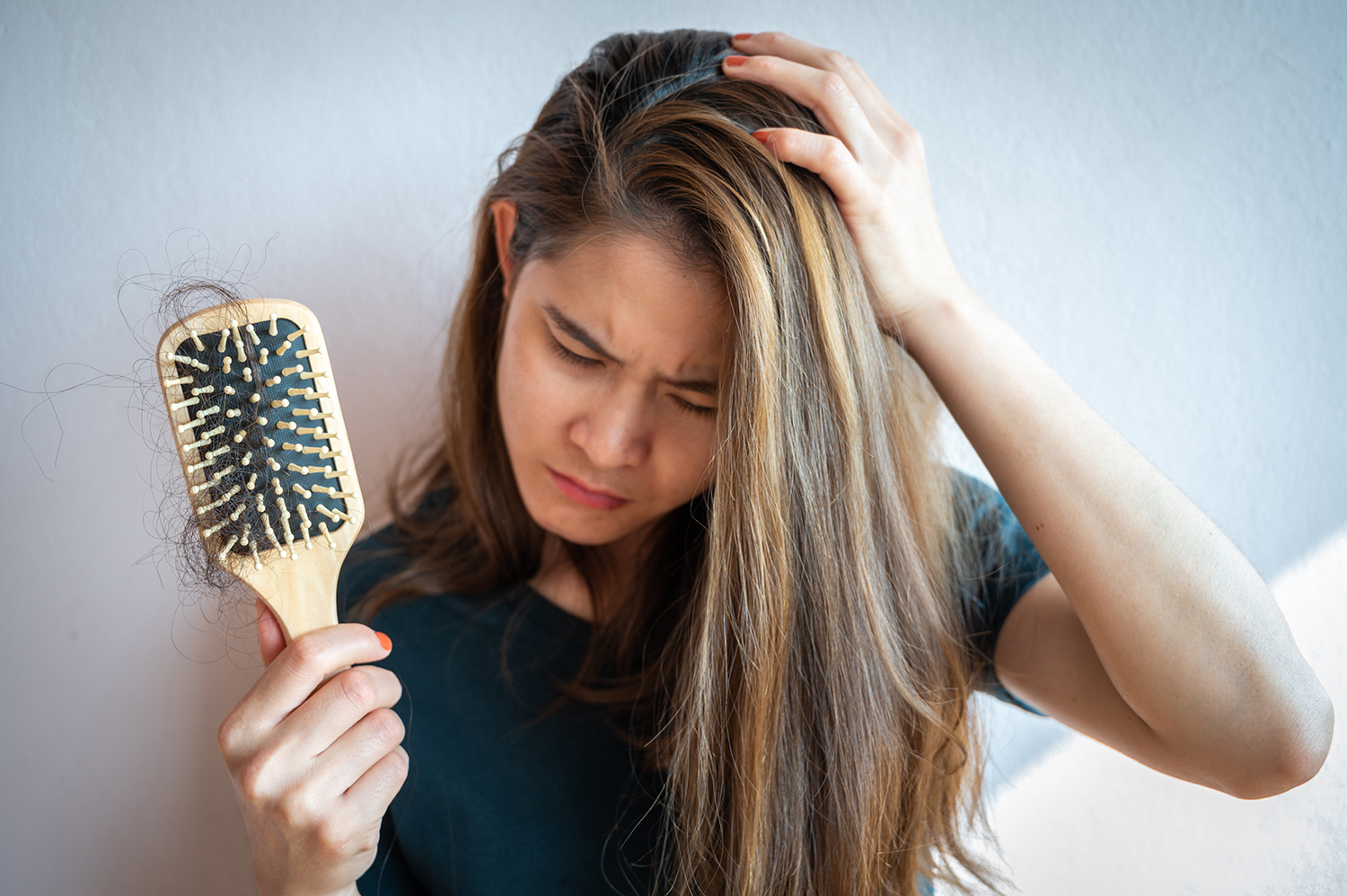
Hair loss can be a distressing experience for anyone, but it can be particularly challenging when it’s caused by a condition like traction alopecia. Traction alopecia is a type of hair loss that results from repeated pulling or tension on the hair follicles, often due to tight hairstyles like braids, weaves, and ponytails. Over time, the stress on the hair follicles can cause damage and lead to hair loss. While traction alopecia can be a frustrating condition to deal with, there are treatment options available that can help manage and even reverse hair loss.
In this blog post, we’ll answer some of the most common questions about traction alopecia treatment. We’ll discuss whether it’s possible to regrow hair from traction alopecia, how long it can take for hair to grow back, and the various treatment options available for managing and eliminating the condition. By the end of this post, you’ll have a better understanding of what causes traction alopecia, how it can be treated, and what you can do to promote healthy hair growth.
Can you regrow hair from traction alopecia?
If you’re dealing with traction alopecia, one of the most pressing questions on your mind may be whether it’s possible to regrow hair that has been lost due to the condition. The answer is yes, it is often possible to regrow hair from traction alopecia, but it depends on a few factors.
First, it’s important to understand that traction alopecia is caused by repeated pulling or tension on the hair follicles. This means that to regrow hair, you need to address the underlying cause of hair loss. The most effective way to do this is to avoid tight hairstyles that put stress on the hair follicles. Once you’ve stopped wearing these hairstyles, your hair follicles can begin to recover and regrow hair naturally.
In addition to avoiding tight hairstyles, there are several treatment options that can help promote hair regrowth. One option is to use topical treatments like minoxidil, which can stimulate hair growth. Another option is to take hair growth supplements, such as biotin or vitamins, which can support healthy hair growth. Keep in mind that these treatments may take several months to produce visible results, and results may vary depending on the individual.
It’s also important to have realistic expectations when it comes to regrowing hair from traction alopecia. In some cases, hair may not regrow fully, or it may take longer than expected. However, with patience and consistent treatment, it’s often possible to see improvement in hair growth over time.

How long does it take traction alopecia to grow back?
If you’re hoping to regrow hair from traction alopecia, you may be wondering how long it will take to see results. Unfortunately, there is no one-size-fits-all answer to this question, as the timeline for hair regrowth can vary depending on several factors.
One factor that can affect how long it takes for the hair to regrow is the severity of the hair loss. If you have significant hair loss due to traction alopecia, it may take longer for hair to regrow than if you have only mild to moderate hair loss. Additionally, individual hair growth rates can vary, so some people may see faster results than others.
In general, it can take several months to a year or more for hair to fully regrow after traction alopecia. During this time, it’s important to be patient and consistent with your treatment. Avoiding tight hairstyles, using topical treatments, and taking hair growth supplements can all help support healthy hair growth and speed up the regrowth process.
It’s also important to note that while you may start to see regrowth after a few months, it may take longer for your hair to reach its full thickness and length. Be prepared to commit to your treatment plan for several months or longer, and don’t get discouraged if you don’t see immediate results. With time and patience, many people are able to regrow hair and manage the effects of traction alopecia.

How do you get rid of traction alopecia?
While it’s possible to regrow hair from traction alopecia, the best way to manage the condition is to address the underlying cause of the hair loss. This means avoiding tight hairstyles that put stress on the hair follicles and taking steps to promote healthy hair growth.
If you’re experiencing traction alopecia, the first step is to stop wearing tight hairstyles like braids, weaves, and ponytails. Instead, opt for looser hairstyles that don’t put as much pressure on your hair follicles. You may also want to consider giving your hair a break from extensions or weaves to allow your hair to recover.
In addition to avoiding tight hairstyles, there are several treatment options that can help manage and even eliminate traction alopecia. Topical treatments like minoxidil can stimulate hair growth, while hair growth supplements like biotin or vitamins can support healthy hair growth. In some cases, hair transplant surgery may be an option for restoring hair lost to traction alopecia.
It’s also important to take care of your hair during the regrowth process. This may involve using gentle shampoos and conditioners, avoiding heat styling tools like flat irons and curling irons, and protecting your hair from the sun and harsh weather conditions. A dermatologist or hair loss specialist can provide guidance on the best hair care practices for managing traction alopecia.
Ultimately, the key to getting rid of traction alopecia is to be proactive about addressing the underlying cause of hair loss and taking steps to promote healthy hair growth. With the right treatment plan and a commitment to hair care, many people are able to manage the effects of traction alopecia and regrow their hair.

Does traction alopecia go away?
One question that many people have about traction alopecia is whether the condition will go away on its own. While it’s possible for hair to regrow after traction alopecia, the condition may not completely go away, particularly if the underlying cause is not addressed.
The key to managing traction alopecia is to stop wearing tight hairstyles and take steps to promote healthy hair growth. While this can help stimulate hair regrowth and minimize further hair loss, it may not completely eliminate the effects of traction alopecia.
That said, with the right treatment plan, many people are able to manage the effects of traction alopecia and prevent further hair loss. It’s important to work with a dermatologist or hair loss specialist to develop a treatment plan that’s tailored to your individual needs and goals.
If you’re dealing with traction alopecia, it’s important to seek treatment as soon as possible. The longer you wait to address the condition, the more difficult it may be to regrow hair and manage the effects of hair loss. With the right treatment plan and a commitment to healthy hair care practices, many people are able to see improvement in their hair growth and minimize the effects of traction alopecia.

Conclusion
Traction alopecia can be a frustrating and challenging condition to deal with, but with the right treatment plan, it’s possible to manage and even reverse hair loss. By avoiding tight hairstyles, using topical treatments and hair growth supplements, and taking steps to promote healthy hair growth, many people are able to see improvement in their hair growth and minimize the effects of traction alopecia.
While regrowing hair from traction alopecia can take time and patience, it’s important to be proactive about seeking treatment as soon as possible. The longer you wait to address the condition, the more difficult it may be to regrow hair and manage the effects of hair loss.
If you’re dealing with traction alopecia, don’t hesitate to reach out to a dermatologist or hair loss specialist for guidance and support. With the right treatment plan and a commitment to healthy hair care practices, you can take control of your hair loss and restore your confidence and self-esteem.
Hair Care
Top Protective Hairstyles for Alopecia: Combating Hair Loss and Boosting Confidence
Say goodbye to hair loss and hello to confidence with these top protective hairstyles for alopecia! Whether you’re experiencing hair thinning, bald spots, or complete hair loss #alopecia #hairloss #protectivehairstyles.
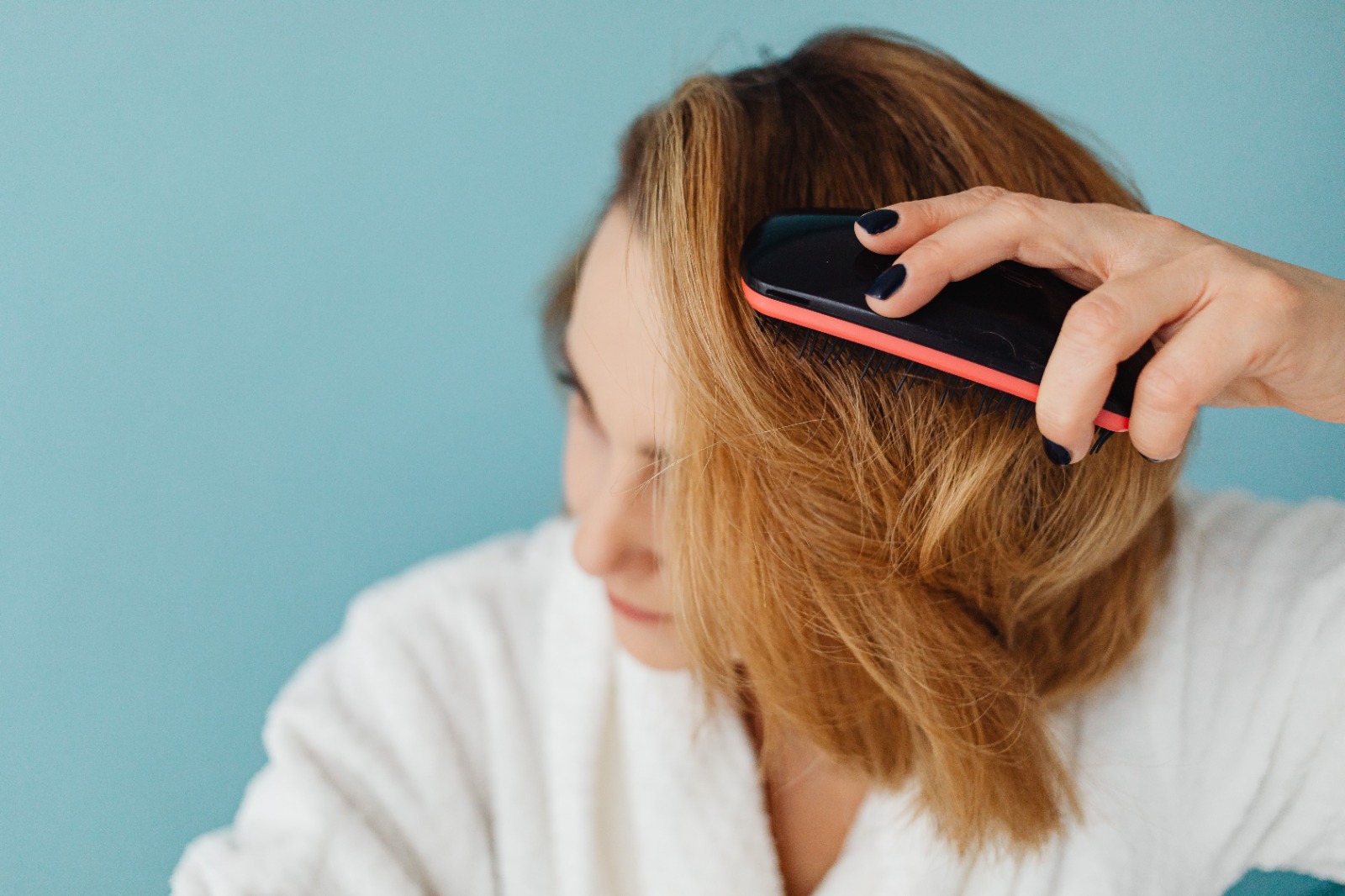
Alopecia, an autoimmune disorder resulting in hair loss, can be a challenging experience for many people. The condition affects millions worldwide and can lead to varying degrees of hair loss, from small patches to complete baldness. One way to manage the impact of alopecia and protect the remaining hair is by adopting protective hairstyles. In this article, we’ll address common concerns related to protective hairstyles and explore top options for those living with alopecia to preserve your hair and boost your confidence.
Can you wear protective styles with alopecia?
Yes, you can wear protective styles with alopecia. However, it’s essential to choose hairstyles that minimize tension on the hair and scalp to prevent further hair loss. Consult with a hair professional or dermatologist to ensure the chosen hairstyle is suitable for your specific needs.
What hairstyle is best for alopecia?
The best hairstyle for alopecia depends on the severity of your hair loss and your personal preference. Some popular options include wigs, headwraps, low manipulation styles, clip-in extensions, and crochet braids. It’s crucial to select a hairstyle that does not aggravate your condition and promotes hair health.
Wigs
Wigs are a popular choice for people with alopecia because they provide an instant solution to hair loss. They come in various styles, colors, and materials, such as synthetic or natural human hair, allowing you to choose one that best suits your personal style. Opt for high-quality, breathable wigs with a comfortable cap that minimizes damage to your scalp and hair follicles. When selecting a wig, consider factors such as hair texture, style, and cap construction. Wigs not only offer an excellent way to hide or cover alopecia hair loss but also provide an opportunity to experiment with different looks without committing to a permanent hairstyle.




Headwraps and Scarves
Headwraps and scarves offer a fashionable and versatile way to cover hair loss while protecting your scalp. They come in various fabrics, patterns, and colors, giving you endless styling possibilities. Cotton, silk, or satin materials are gentle on the scalp and help to retain moisture. This option is ideal for those who want to give their scalp a break from wigs or other more structured protective styles. Headwraps and scarves can be worn in numerous ways, such as turbans, wraps, or simple knots, providing a stylish alternative for covering alopecia hair loss and expressing your creativity.




Low Manipulation Styles
Low-manipulation hairstyles, such as loose braids, twists, or updos, minimize tension on the hair and scalp, reducing the risk of further hair loss. These styles require minimal maintenance, making them suitable for those with thinning hair or sensitive scalps. Loose braids or twists, like rope twists or flat twists, are especially ideal for individuals with alopecia, as they minimize tension while still providing a fashionable look. Updos, like loose buns or chignons, can also help to conceal thinning areas while protecting your hair from further damage. Always ensure that your low manipulation style is not too tight and that it doesn’t put stress on your hair and scalp.
Clip-in Extensions
Clip-in extensions can provide instant volume and length to your hair without causing too much tension on your scalp. These extensions can be clipped onto your existing hair, allowing you to create various styles without the need for adhesive or sewing. Ensure that you choose extensions made from high-quality, natural hair and avoid putting too much tension on your hair. Clip-in extensions are an effective way to hide alopecia hair loss and add fullness to your natural hair. They can be easily applied and removed, offering flexibility in styling and the ability to change your look frequently without causing damage.





